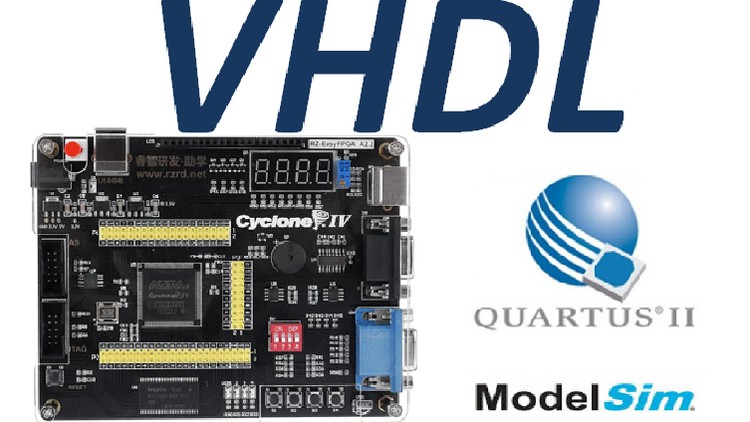Learn FPGA Design With VHDL (Intel/Altera)

Why take this course?
It seems you've provided a comprehensive outline for a VHDL and FPGA design course, covering both the theoretical aspects of the VHDL language and the practical aspects of hardware implementation on FPGAs. The course is structured to take the learner from the basics of VHDL through to advanced topics like hierarchical design, design verification, and finally, implementing a UART module with a state machine as a capstone project.
Here's a summary of the course structure you've outlined:
-
Introduction to Hardware Background: Establish the foundation of understanding by explaining the role of VHDL in FPGA design and how it relates to actual hardware implementation.
-
VHDL Language Coverage: Dive into the VHDL language, learning about signals and data types, keywords and operators, concurrent and sequential statements, entities and architectures, processes, generics, constants and variables, records, component instantiation, procedures and functions, packages and libraries, and type conversions.
-
Building Fundamental FPGA Blocks: Learn to code basic hardware blocks such as tri-state drivers, registers, comparators, multiplexers, shift registers, serializers, RAMs/ROMs, and finite state machines (FSMs), and understand their mapping to real FPGA hardware.
-
Hierarchical Design: Explore design units and how they can be combined to form a hierarchical design, which is essential for managing complexity in larger projects.
-
Good FPGA Design Practices: Discuss common mistakes and design pitfalls in FPGA development, focusing on best practices to avoid them, including latches, generated clocks, clock domain crossing, reusable designs, signal initialisation, and PLLs (Phase-Locked Loops).
-
Design Verification: Learn how to write effective test benches for VHDL code, perform file IO for input/output data, and create self-checking test benches to streamline the testing process.
-
Capstone Project - UART Module: Design and implement a Universal Asynchronous Receiver/Transmitter (UART) module with a state machine from scratch. This will involve writing VHDL code for each design unit, verifying with test benches, and then assembling the units into a complete system.
-
Implementing on FPGA: Create and configure a project in Intel Quartus Prime, handle pin assignments, apply basic timing constraints, and finally test the UART module on real hardware to ensure correct functionality.
Throughout the course, students will engage with hands-on projects and simulations to reinforce learning and gain practical experience with VHDL and FPGA design. This comprehensive approach ensures that learners are well-prepared to tackle complex FPGA designs independently.
Loading charts...